Long live print

caption
Zine-makers work on their projects at the Anchor Archive Zine Library on Gottingen Street in Halifax. There is a zine drop-in at the zine library every Monday night from 6-9 p.m. until Oct. 20, 2025.At the top of a winding, narrow staircase is the Nova Scotia College of Art and Design (NSCAD) student union zine press.
A desk inhabits the far corner of the office and faces a large pride flag hanging on the wall. On the desk is a paper cutter, a colourful, glossy Art in America Magazine, a variety of books and papers sitting in a heap, a dirty mug, and a sign that reads SUNSCAD Zine Press with a black sun beaming in the bottom left corner.
The only indication that it’s 2025 is a desktop computer.
NSCAD’s SUNSCAD Zine Press began during the pro-Palestinian Al Zeitoun University Encampment at Dalhousie University in summer 2024. The encampment consisted mainly of students.
“It was just people in one of the tents, they had a printer, they had the same paper cutter, and they were just making zines to share with people in and around the encampment,” says Ziggy Kirch, president of NSCAD’s student union.
Readers from Generation Z, encompassing people aged 13 to 28, are increasingly interested in zines, or self-published booklets, as an alternative to digital media. Zines have a long history in punk, anarchist, and activist spaces as a way of sharing information in an accessible way.
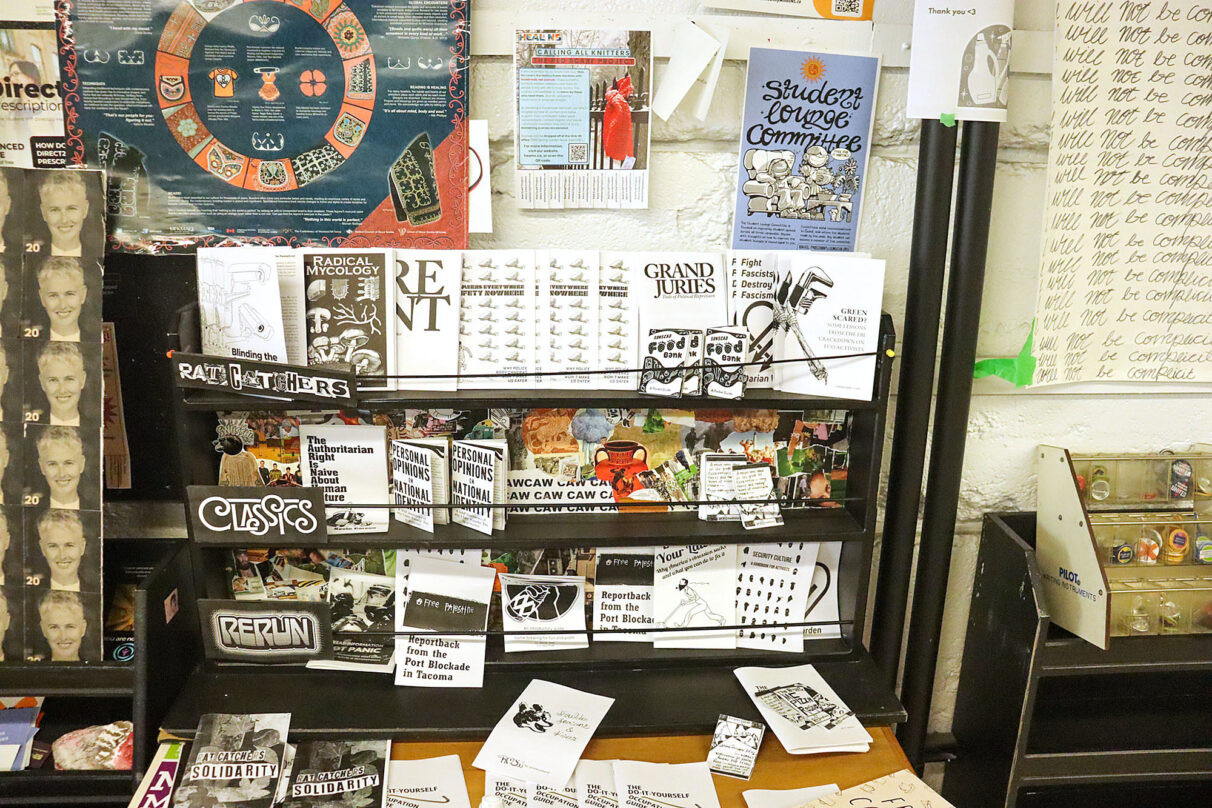
caption
SUNSCAD Zine Press zines are displayed on a bookshelf at NSCAD University on Duke Street in Halifax. The zine press has three main publications: Ratcatchers, Classics, and Rerun.The SUNSCAD Zine Press has a mission to publish radical perspectives on anarchist and socialist topics.
“When people get together with these shared beliefs about the way the world should be and we want to work together, and we want to change, I think you see a lot of things like this start to come out of that energy,” said Kirch.
SUNSCAD Zine Press editor Sula Macdonald makes zines such as Green Scared? Some lessons from the FBI crackdown on eco-activists. Macdonald, who uses they/them pronouns, has a pile of 8.5×11-inch paper and a long-arm stapler. Their movements are efficient and mechanical, grabbing papers and stapling a couple times in the middle to create a spine.
Even though most of the information in zines can be found online, Kirch says the zine movement is about the culture of sharing.
“There’s something very nice about just having the thing in your hands and someone’s already done the work of finding it for you,” says Kirch.
The artistic element of the zine is what initially interested Kirch in high school. Now, as a student at NSCAD, it has become something more.
“[Zines] are a really incredible space to break out of the boxes that you see people getting put in by things like traditional media.
“The beauty of a zine is it’s so simple. … At their core, zines are a way to get information out there without those limitations of publishers, or censorship.”
Reid Urchison has been making zines since 2014 and continued to explore the form in art school. Currently working as a copy editor at a manga publisher in Montreal and selling zines on the side, Urchison has noticed an influx of new zine fairs such as the Halifax Art Book Fair, and the Object/Project Art Book Fair in Ottawa.
Urchison, 31, prefers print media over the digital form.
“I’m tired of it, and it doesn’t feel real, in a way,” Urchison says, referring to digital media. “…maybe just because it disappears as soon as you close the window. You definitely feel more like you made something if you can hold it in your hands, than just on the screen.”
Urchison is a bit older than Gen Z, who are known as the digital generation and who grew up with smartphones and social media.
“I think young people now might be the ones who are the most jaded about digital media because they’re more involved with it,” Urchison says. “They’re more likely to have grown up using it all the time and feel some nostalgia for something that they actually never experienced… like the simplicity of print.”

caption
Sula Macdonald makes zines for the SUNSCAD Zine Press at NSCAD University on Duke Street in Halifax. They use a long-arm stapler to bind the zines.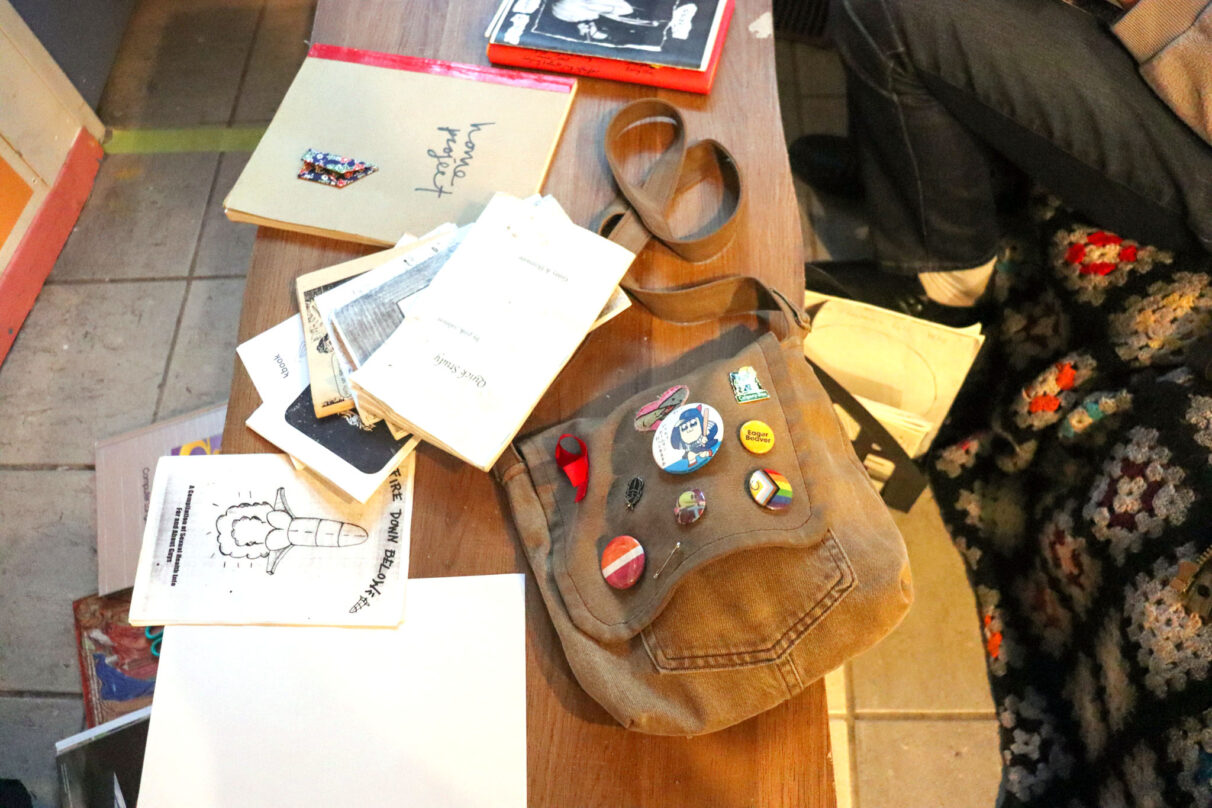
caption
Zines sit on a coffee table along with a brown satchel decorated with various pins in the Anchor Archive Zine Library on Gottingen Street in Halifax. The zines are being made during the weekly zine-making drop-in.Zine archive
RadStorm is a community arts space in north-end Halifax and since 2018 also houses the Anchor Archive Zine Library. It now has more than 8,000 physical zines.
At the front of the building is a cozy nook with an armchair and couch. The wall is covered with catalogued zines in cardboard magazine holders with zine titles such as Fire Down Below; A Compilation of Sexual Health Info For and About Guys. On the cover is a black and white drawing of a rocket in the shape of a penis.
In another magazine holder is Fire Extinguishers and Fire Starters; Anarchist Interventions in the Spanish Revolution; An Account from Barcelona. The paper for this zine is blue.
The zine library began in 2005 on Robert Street in a little red house. The space became known as the Robert Street social centre, where zine makers could work on projects and live in the shed next to the house.
Since 2007, Amanda Stevens has been the online catalogue manager for the Anchor Archive Zine Library.
Purdue University researcher Rachel Bonini wrote in a 2022 festival guide that zines date back to the 1930s and that they became popular between the ’70s and ’90s.
Stevens says she’s seen a resurgence.
“I think more people are making zines or reading zines,” says Stevens. “You’re more likely to find them in bookstores now than you used to be.”
Although it’s easier for people to express themselves publicly on social media, she says people appreciate zines as a unique way of artistic expression.
The Brooklyn Museum even curated an exhibit in 2023 called Copy Machine Manifestos: Artists Who Make Zines.
Stevens says zines are a good alternative to digital culture.
“Social media platforms are owned by these monopolies, these huge corporations, and they’re using our data,” says Stevens. “So, some people don’t want to participate in them. They can be so addictive and kind of superficial.”
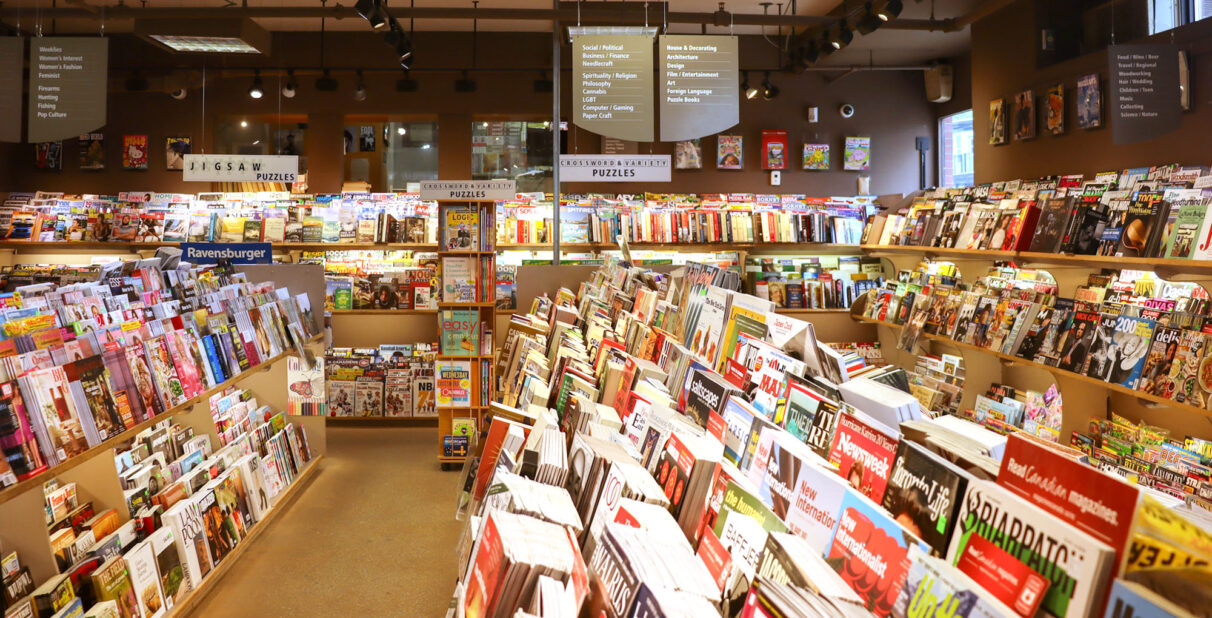
caption
Atlantic News on Morris Street in Halifax has been open since 1973. The store has a growing zine section.Zines on the newsstand
Halifax newsstand Atlantic News has been around since 1973. Store owner Chris Green wears a black apron with an orange enamel pin that says Shop Local. Green’s dog, the colour of golden rust, wags its tail energetically, not unlike the logo above the newsstand’s door, which features a person reading beside a dog. Its mechanical tail moves back and forth.
Although Atlantic News’s customers are generally older, Green isn’t worried about the future of the newsstand. They’re diversifying their offerings and recently started selling art books, such as zines, made by students, mainly from NSCAD.
“We have a growing zine section,” says Green, “and I’m learning about that world, but that’s mostly younger people. It’s a new format, but it’s something they could get in their hands … it adds to the layers of the different things that we offer here.”
Recently, Green noticed more magazines cropping up in Halifax, specifically unique, niche ones.
“I don’t know if it’s post COVID and (because of) AI that people are finding they like to have stuff in their hands,” Green says.
Print makes a comeback
The global print newspaper and magazine market size was estimated at US$124 billion in 2021. It is predicted to drop by US$19 billion in 2028.
Even so, some major media properties have restarted their physical publications in recent years.
One example is the satirical magazine The Onion, which went digital in 2013. CEO Ben Collins brought back a monthly print edition in 2024. Some others include The Atlantic, Saveur Magazine and Nylon Magazine.
Jordan Laflure, executive editor of The Onion, says there are three reasons for their return to print: the comedic content is better served away from the clogged social media environment; a print publication avoids digital burnout or toxic experiences online to create a more fun reading experience; and the magazine needs to build a more stable revenue base directly from their most loyal readers.
“Some brands have figured out ways to establish a more distinct brand, but generally, if I’m on my phone, there’s a flattening of these brands, where they all appear similar,” Laflure said in a video interview from Chicago.
“So, part of the reason that I find a print experience to be richer is that you can more impactfully convey your distinct design language.”
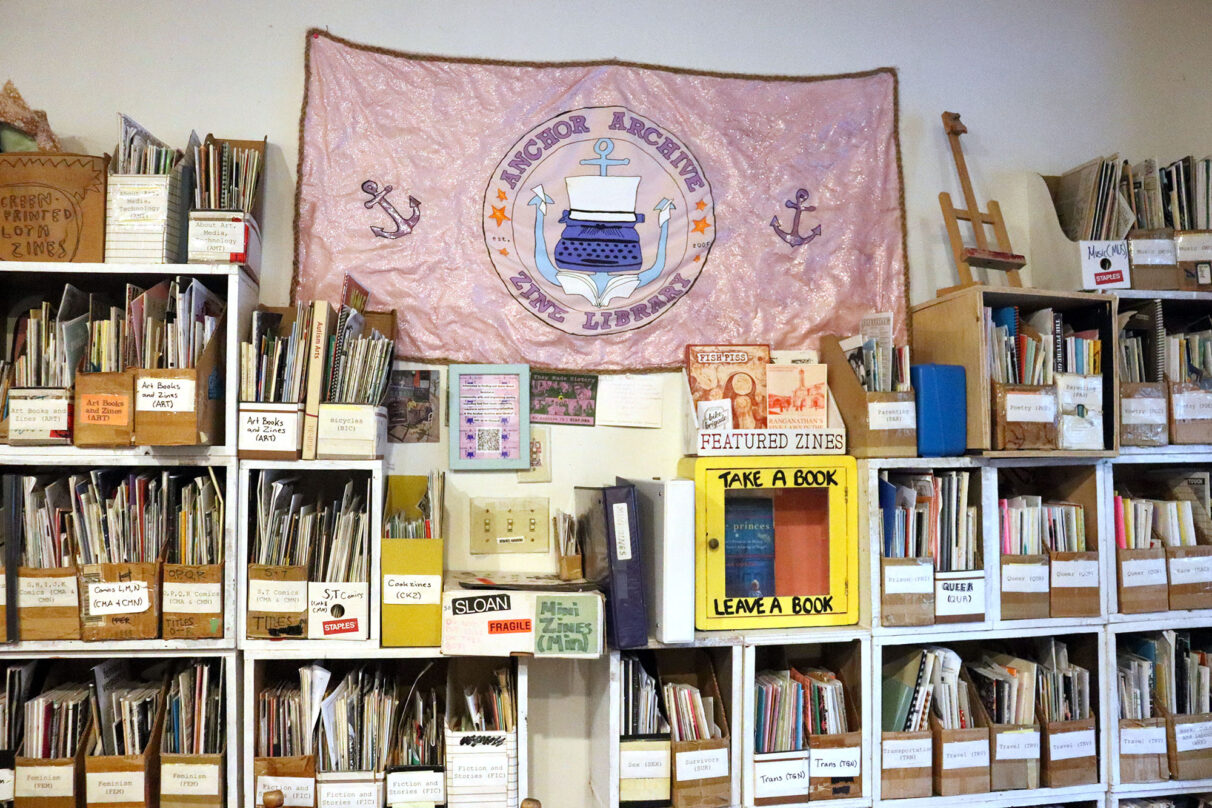
caption
Zines are organized by theme in the Anchor Archive Zine Library. Members can borrow the zines, or the public can read them during RadStorm opening hours.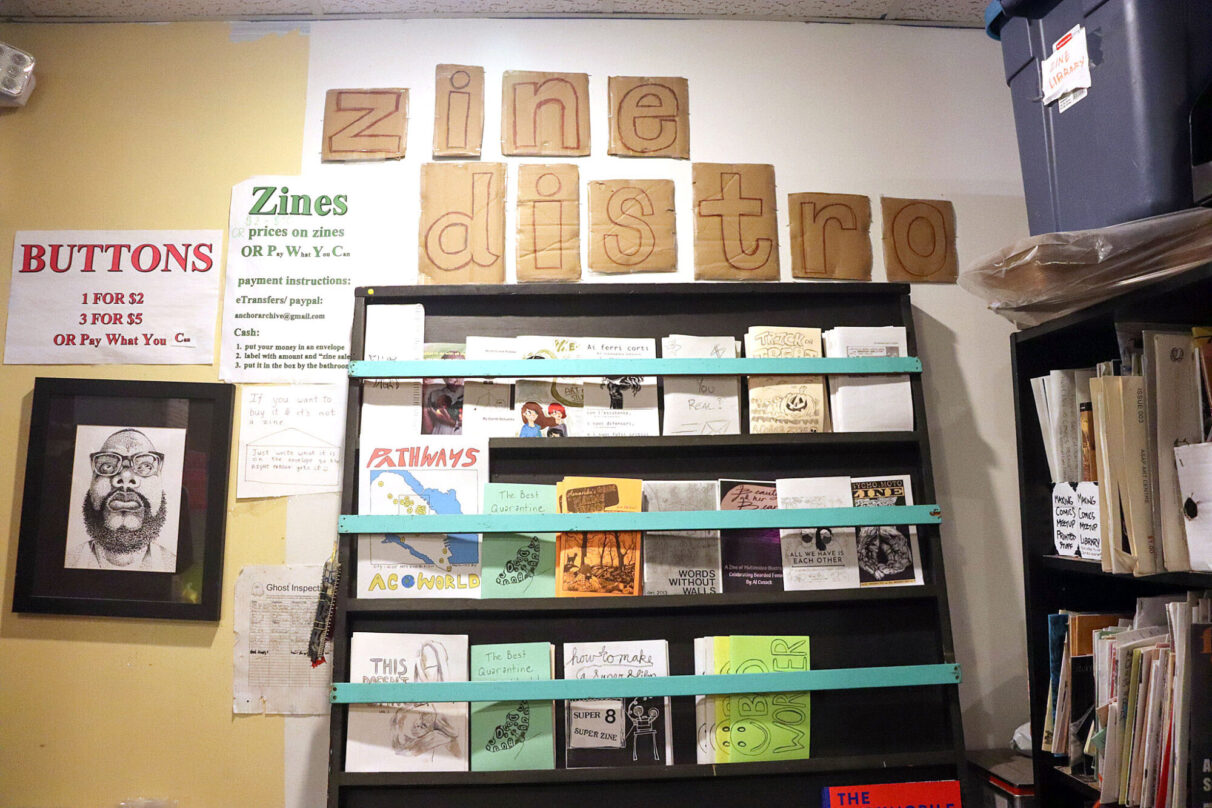
caption
Zines for sale are on display in the Anchor Archive Zine Library. The zines have prices on them, and a “pay what you can” system is also in place.Print princess
New York City-based Kelsey Russell, also known as the print princess, uses her TikTok account for reasons some might not expect. She makes media literacy content where she reads different forms of print media and talks with her viewers about what she’s learning.
Russell, 25, used to read newspapers growing up but stopped in high school. While getting her master’s degree, she again became interested in print.
“With a lot of my classmates, it felt like they knew so much more about the political world, so I felt like I needed to get more information,” Russell told The Signal in a video interview. “But I also was trying to reconnect with things that made me really happy as a little girl, to deal with some anxiety, and I said I should just get the newspaper.”
Russell has always used TikTok as a way to share what was going on in her life but within the first week of posting about print media she gained 15,000 followers.
Russell says Gen Z is intrigued by her content because they’re a curious, information-hungry generation and she’s talking about news in an approachable way. In fact, Russell prefers print media over digital media in all cases except for breaking news.
Gesturing to her phone, Russell says, “God, this thing sucks. It’s a drug … When I read my news in print, I feel lighter about the world. Even though it’s heavy stuff going on, I feel more curious about it. I leave with more questions. I also can take my time consuming the information. I think our phones don’t encourage us to take time consuming things. They actually encourage us to move on to the next piece of content as fast as possible.”
With print media, Russell also consumes news she wouldn’t have found on her phone due to algorithms. It allows her to open her mind to new perspectives.
Not everyone her age seeks out print media, though. For the industry to survive, Russell says there should be fewer editions and a higher focus on quality and curation to people who would benefit from the information.
“I think it could be more of a tool to help people have more critical thinking,” Russell says. “It could be a tool to help people expand their interests.”
Print media can even be used as a coping mechanism, Russell says, to help promote peace of mind.
“Being a part of Gen Z, we just deal with so many mental health issues, and I think heavily, it’s connected to the amount of content that we consume on our phones …,” says Russell.
“Reading the science section, or the style section, or the art section is actually a way to slow your stimulus down. It’s a time to reconnect and get off your screen.”
About the author

Ellie Enticknap-Smith
Ellie is a fourth-year journalism student at the University of King's College. She enjoys reading, writing, and swimming at the cottage in her...

Leave a Reply